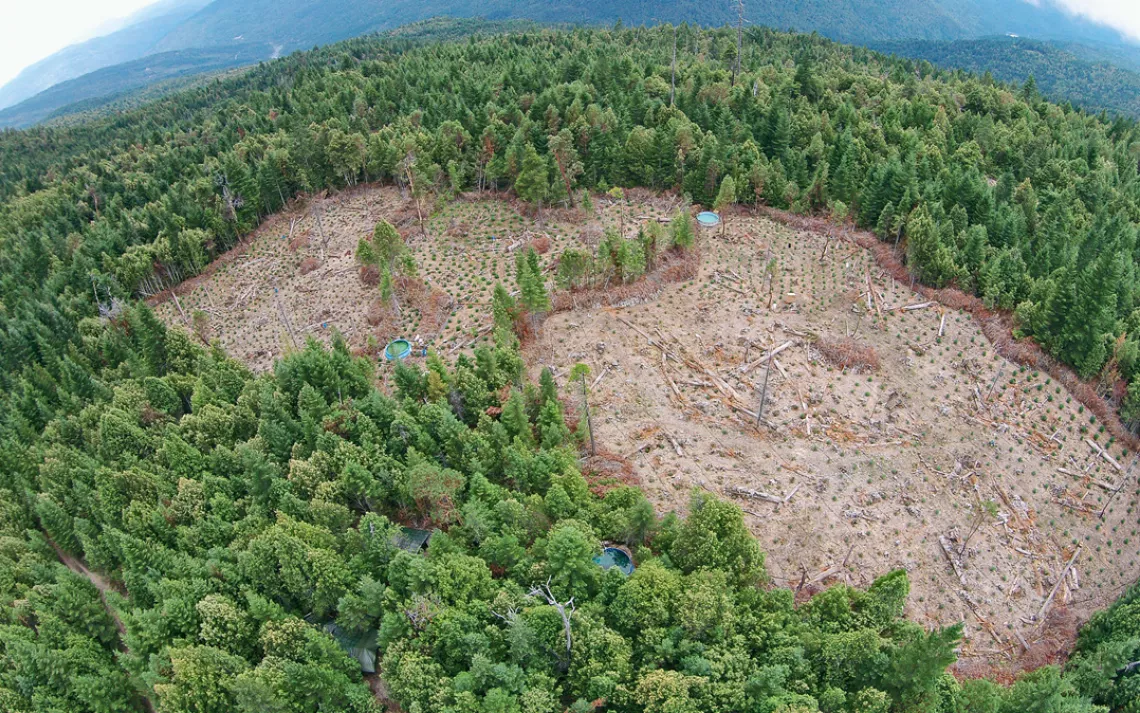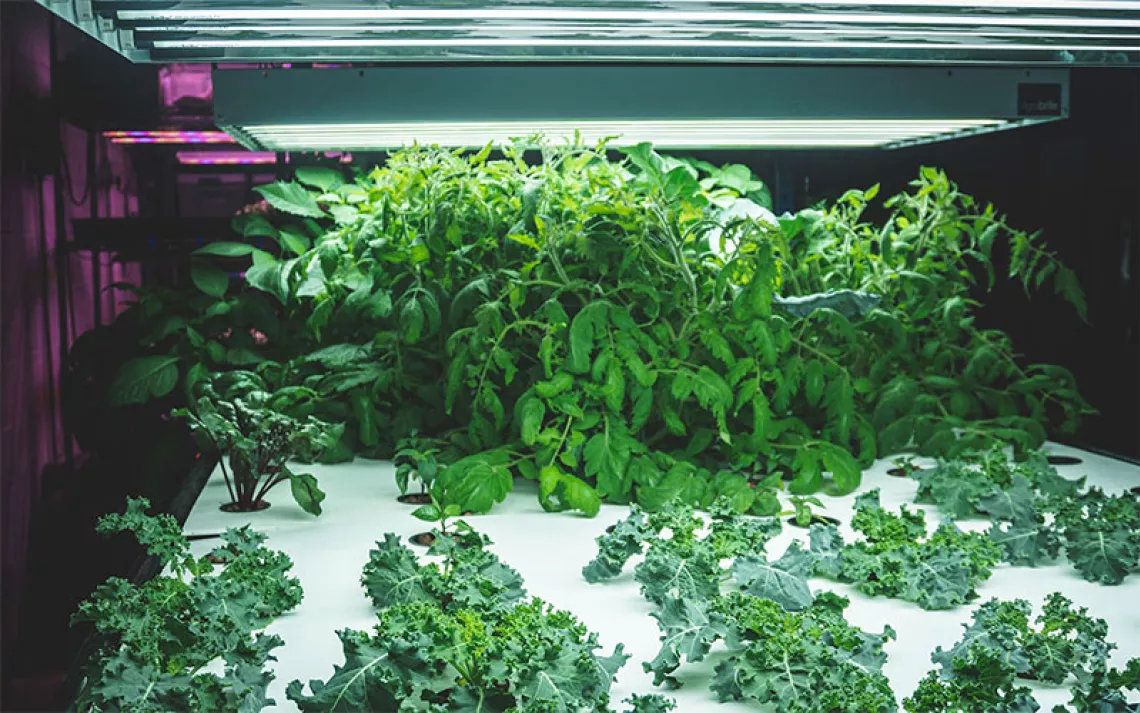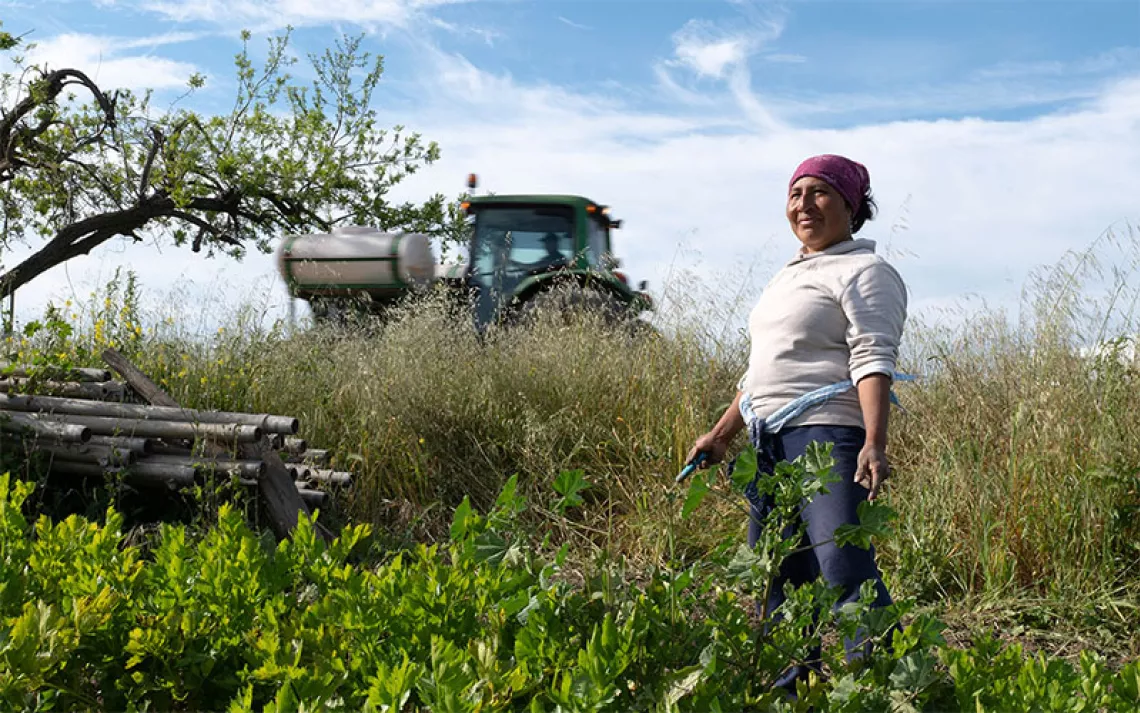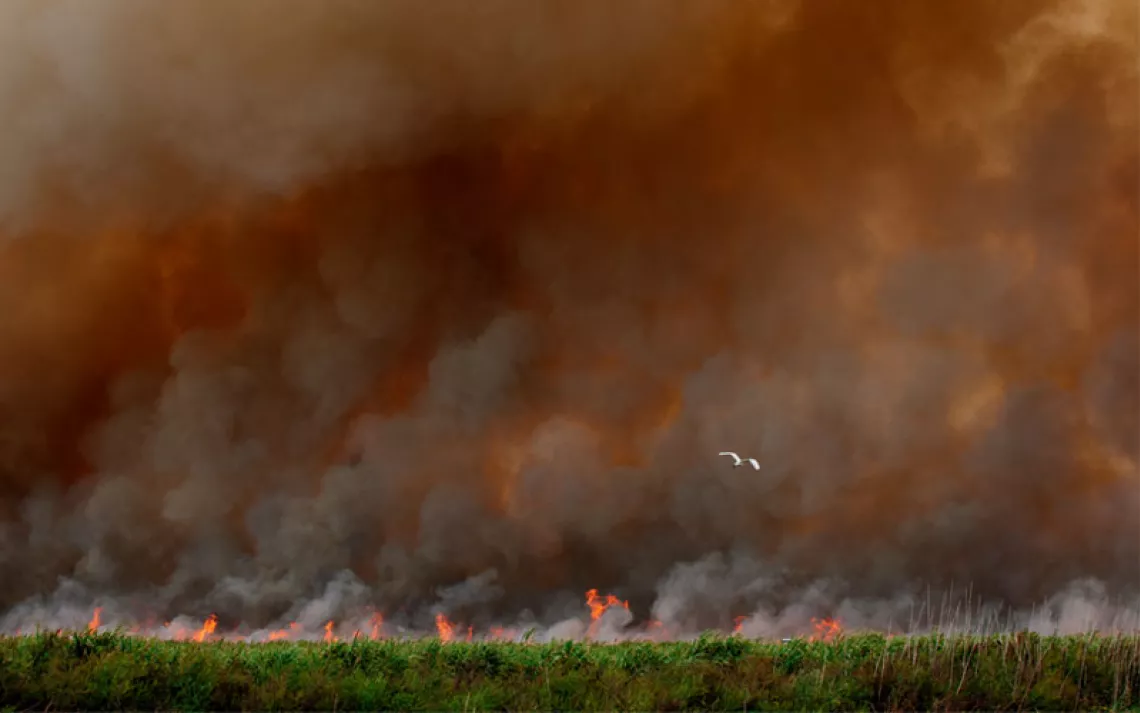The Legal Marijuana Industry Needs to Be Regulated
It's time to address the environmental consequences of legalized pot

Aerial photo of an approximately-six-acre illegal marijuana grow site near the Hoopa Indian Reservation in Humboldt County, California. | Photo by Andrew Hughan/California Department of Fish and Wildlife
When Scott Bauer, a senior scientist supervisor with the California Department of Fish and Wildlife, wants people to understand the environmental implications of the state's marijuana industry, he gets them high—about 6,000 feet high. Through the windows of a plane, one can see what California's thriving pot business has done to the thickly forested mountains of the three northern counties known as the Emerald Triangle, which are habitat for endangered salmon and other sensitive species. The carpet of trees is threadbare, spotted with large tracts of cleared land, greenhouses, monoculture cannabis fields (or "grows"), improvised roads, and diverted streams.
"Every year we think there couldn't be more grows," Bauer says. "And there are more grows."
California voters approved the use of medical cannabis in 1996. Over time, other states followed suit. Legalization and decriminalization measures appeared on the ballot in nine states last fall. Twenty-eight states now—or will soon—allow medical marijuana, including eight that also sanction recreational use.
The federal government, however, still views marijuana as a Schedule 1 narcotic. Jeff Sessions, Donald Trump's pick for attorney general, is outspoken in his hostility toward legal pot. "Good people don't smoke marijuana," he said at a Senate drug hearing in April 2016. The Weed Blog called him "drug-law reformers' worst nightmare come true." His appointment may end the long-standing detente between the Department of Justice and the states over marijuana enforcement.
Regardless, the U.S. marijuana industry isn't going anywhere. Last year, the value of the legal-pot market was expected to exceed $7 billion, while estimates for the total market—licit and illicit—were as high as $45 billion. With that kind of money at stake, the only question is whether regulators will have the means to protect the environment from the myriad effects of commercial-scale cultivation.
California's 20-year experiment with quasi-legalization is a cautionary tale, particularly for those who still think of the marijuana industry as being run by mellow, nature-loving hippies. The Justice Department estimates that 60 to 70 percent of the nation's weed is grown in the Golden State, and the ravages of the green rush have not been terribly different from those of the gold rush 150 years earlier. "The image of the happy hippie cultivating the land doesn't exist anymore," Bauer says. "It's flat-brim 24-year-olds with giant trucks, and they're making money."
On public lands, drug cartels and other criminal organizations have built enormous, well-guarded plantations in remote areas, covering the land with trash and irrigation pipes and contaminating it with pesticides. Growers have exacerbated California's historic six-year drought by diverting water from headwater streams and springs in the summer and fall, when flows are weakest. Each marijuana plant consumes about six gallons of water per day. That can have major effects on seasonal streams, which salmon rely on. Water demand from Emerald Triangle marijuana grows often leaves streams there completely dry.
Cannabis growers also use heavy doses of pesticides, fertilizers, herbicides, and rodenticides, with dire results for forest soils and waterways. The poisons are lethal to Pacific fishers, a weasel-like mammal that is already a candidate for the endangered-species list.
Proposition 64, which legalized recreational use in California in 2016, offers a beacon of hope in the form of an unprecedented level of environmental regulation and funding. Twenty percent of revenues from a tax on the sale and cultivation of marijuana—an amount likely to exceed $200 million per year—will be available to repair damaged lands and to hire staff to monitor and enforce environmental laws. Bauer's department is hiring 15 environmental scientists and as many game wardens for a single watershed-enforcement team.
In Washington and Colorado, the problem is the temperature-control systems and high-intensity lighting used by indoor growers. While a Seattle office building uses about 18 kilowatt-hours of energy per square foot, indoor cannabis operations there use about 300 kilowatt-hours per square foot. In 2014, Colorado found that its more than 1,200 legal grow houses used as much power as 35,000 households.
"There's a lot of potential for energy savings," says Howard Geller, executive director of the Southwest Energy Efficiency Project, "but the growers don't want to take any risks. They're making a lot of money, and [marijuana] quantity and quality are priorities one, two, and three."
Pesticides pose another problem, because marijuana is federally illegal. "We've been working with the EPA since 2012," says John Scott, pesticides programs section chief for Colorado's Department of Agriculture. "They've always held the same line—that no pesticides are approved for use with marijuana."
The result is that rules vary widely from state to state. Most states are developing approved pesticide lists for growers, who are eager for chemical weapons against pests like powdery mildew. But without a well-funded testing and enforcement team to catch them, some growers seem to be using whatever pesticides they have on hand, including ones that are only approved for use on ornamental plants. Colorado has had to issue a number of recalls of marijuana contaminated with illegal pesticides, including thousands of plants grown by a company called the Organic Greens Collective that turned out to be contaminated by the endocrine disruptor myclobutanil. In California, one testing company found pesticide residues in 84 percent of medical cannabis samples.
All of which points to the challenge of greening an industry that has grown up in the shadows and continues to live in a regulatory netherworld. "Any agricultural commodity, whether lettuce or cannabis, has impacts," says Jennifer Carah, a senior freshwater ecologist with the Nature Conservancy who has studied the crop's effects in California. "One reason the impacts around the cultivation of cannabis have been so alarming is because there's been no regulation."
 The Magazine of The Sierra Club
The Magazine of The Sierra Club



